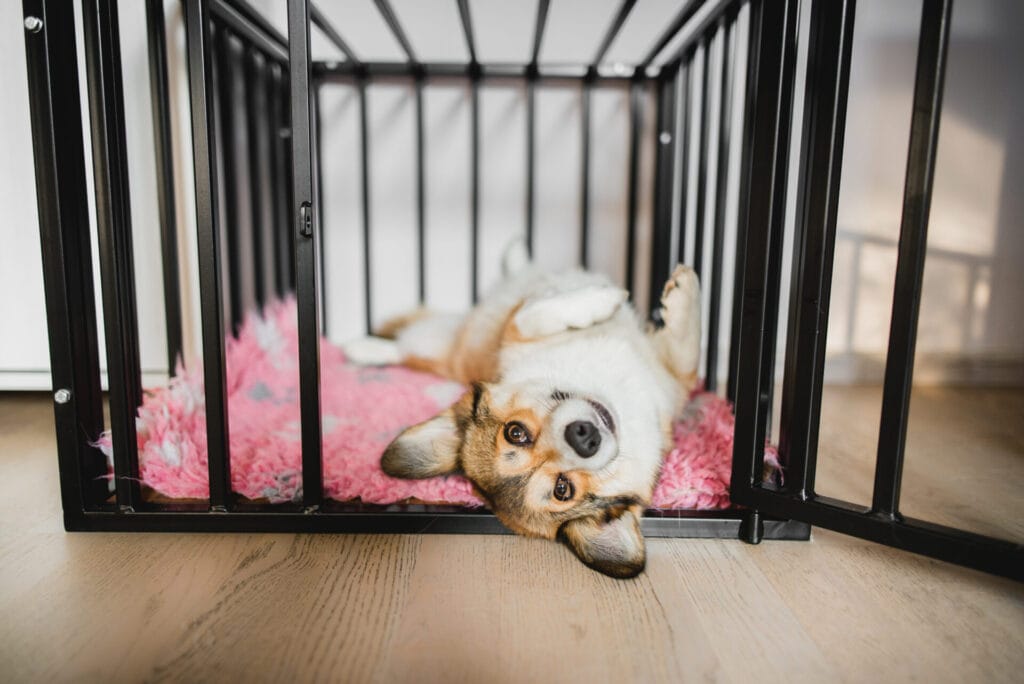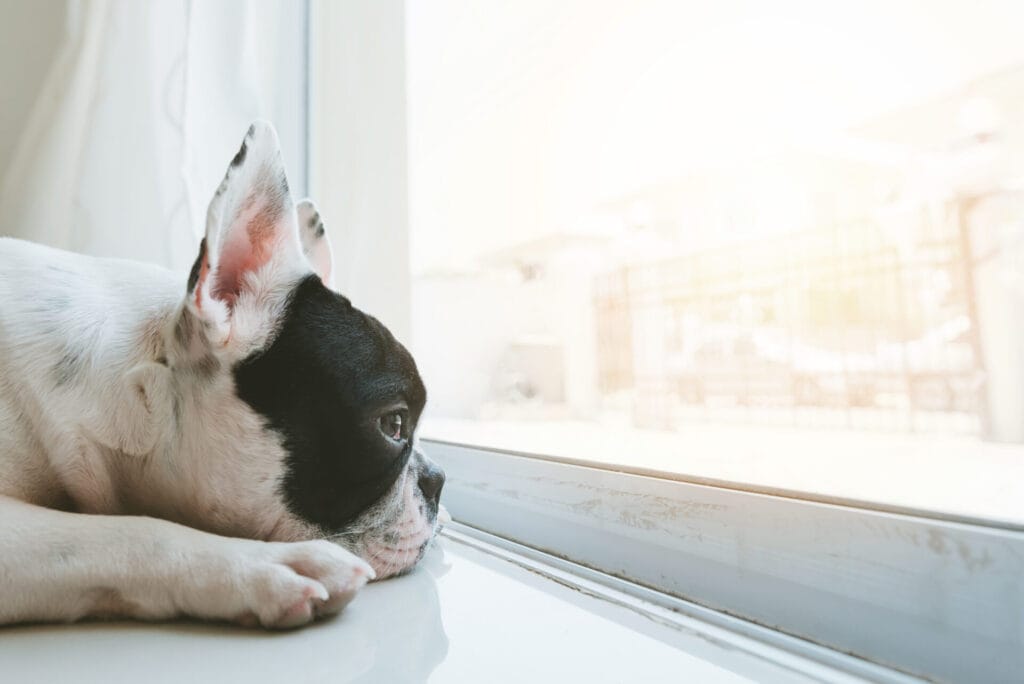In the journey of life with our four-legged companions, there comes a time when they must face the challenge of being left alone. As much as we cherish their presence, having them accompany us everywhere we go is impractical. That’s why it’s crucial to help them become comfortable with solitude.
Learning to be alone is integral to their upbringing, fostering a sense of calm and resilience. Without this skill, they may fall prey to separation anxiety—a formidable foe to overcome. Teaching them independence is paramount to ward off anxiety in your canine companion.
This article will provide effective strategies and techniques to train your dog to be independent and well-behaved even when you’re not at home.
What is Destructive Behavior?
Destructive behavior refers to actions exhibited by a dog that damage or destroy objects, furniture, or property. This behavior may include chewing, digging, scratching, or tearing apart items, often driven by boredom, anxiety, fear, or frustration.
Destructive behavior can cause physical damage and indicate underlying emotional or behavioral issues that need to be addressed through proper training and enrichment.
5 Ways To Train A Dog To Be Alone Without Destructive Behavior
Dogs thrive on social interaction and being part of our daily lives, but ensuring they feel at ease when left home alone is equally important. By following the techniques below, you can help your pup understand that solitude is natural and prevent the onset of separation anxiety.
Crate Training
Crate training offers a fantastic solution for ensuring your furry friend stays relaxed and out of trouble when left alone. It provides them with a cozy space, like their personal room filled with all their favorite things.
When welcoming a new puppy or dog into your home, it’s essential to establish a designated area where they can feel safe and secure, whether you’re present or not. In addition, it allows them to gradually adapt to their surroundings without being overwhelmed.
Use a dog pheromone diffuser nearby to create a peaceful atmosphere in the crate. A white noise machine or calming music can also help mask external noises that might startle your dog or trigger barking.
As your puppy matures or your new dog adapts to their surroundings, gradually expand their access to larger areas of your home, ensuring a puppy-proof environment.

Creating Happy Associations
Leaving a puppy alone without constructive engagement in its safe area can lead to trouble. Instead, provide them with stimulating activities to cultivate happiness during confinement. It can be achieved through food-related incentives or exclusive toys designated for alone time.
A chew toy filled with food, like a Kong, encourages positive chewing behavior and keeps them entertained. Edible chews, food-hidden areas, and food-releasing puzzle toys also help keep puppies occupied. Ensure the safety of toys and chews, consulting your veterinarian for guidance.
Consider using a sound machine or heartbeat pillow to provide soothing company. Finally, opt for calming music, like Moonlight Sonata, as specific genres can influence a puppy’s behavior.
Gradual Desensitization
To help your dog develop a neutral association with your departure routine:
- Practice desensitization.
- Break down the departure routine into manageable steps, practicing each one repeatedly before progressing to the next. For instance, start by putting on your shoes, grabbing your keys or purse, and touching the doorknob without leaving.
- Remain calm and avoid giving attention to your dog throughout this process.
Gradually add steps like opening the door, stepping outside, closing the door, and immediately re-entering. With time, extend the duration before returning. Practice during routine tasks like taking out the garbage, fetching the mail, or quick grocery store trips. By desensitizing your dog, you teach them that your departures are inconsequential, minimizing anxiety.
Regular Exercise And Mental Stimulation
A tired dog is a content dog. Before leaving your dog alone, ensure they have had sufficient physical exercise. Sufficient exercise is vital for addressing behavior issues and is more than just about physical activity. Mental stimulation plays an equally crucial role in tiring out your dog. Engaging their brain helps induce sleepiness, making them more content when left alone.
Engage your dog in various activities, such as going on a “sniffer” to activate their sense of smell. Teach them new tricks using clicker training, create a dog puzzle for them to solve, or enjoy a game of Hide and Seek on rainy days for mental and physical exercise. Additionally, stimulate their mealtime using puzzle bowls or snuffle mats to engage their problem-solving skills while eating.
Seeking Expert Guidance
When faced with challenging cases of separation anxiety or destructive behavior, it may be beneficial to seek professional assistance. Enlisting the expertise of a qualified dog trainer or behaviorist can make a world of difference in helping your furry friend overcome these issues.
A skilled professional will thoroughly assess your dog’s unique circumstances and devise a personalized training plan tailored to their needs. Then, with their wealth of knowledge and experience, they will guide you through the training process, offering invaluable support at every step.
Embracing professional assistance ensures a targeted approach and instills confidence in both you and your canine companion. With a trained expert, you can navigate the path toward a harmonious and fulfilling relationship, helping your dog thrive in solitude without succumbing to destructive behavior.
Conclusion
A dog lacking training in being alone may engage in undesirable behaviors, resulting in an unpleasant experience for both the dog and the owner. In extreme cases, it can lead to the development of distressing separation anxiety, causing prolonged stress for the dog.
On the other hand, a trained dog can create joyful moments. Training your dog to be alone without destructive behavior requires patience, consistency, and positive reinforcement. By gradually desensitizing your dog to being alone, creating a safe space, and providing mental stimulation, you can help them develop independence and reduce anxiety.
Remember, each dog is unique, so adapt these strategies to suit your furry friend’s needs. With time and effort, your dog can learn to be content and well-behaved even when you’re not at home.




















